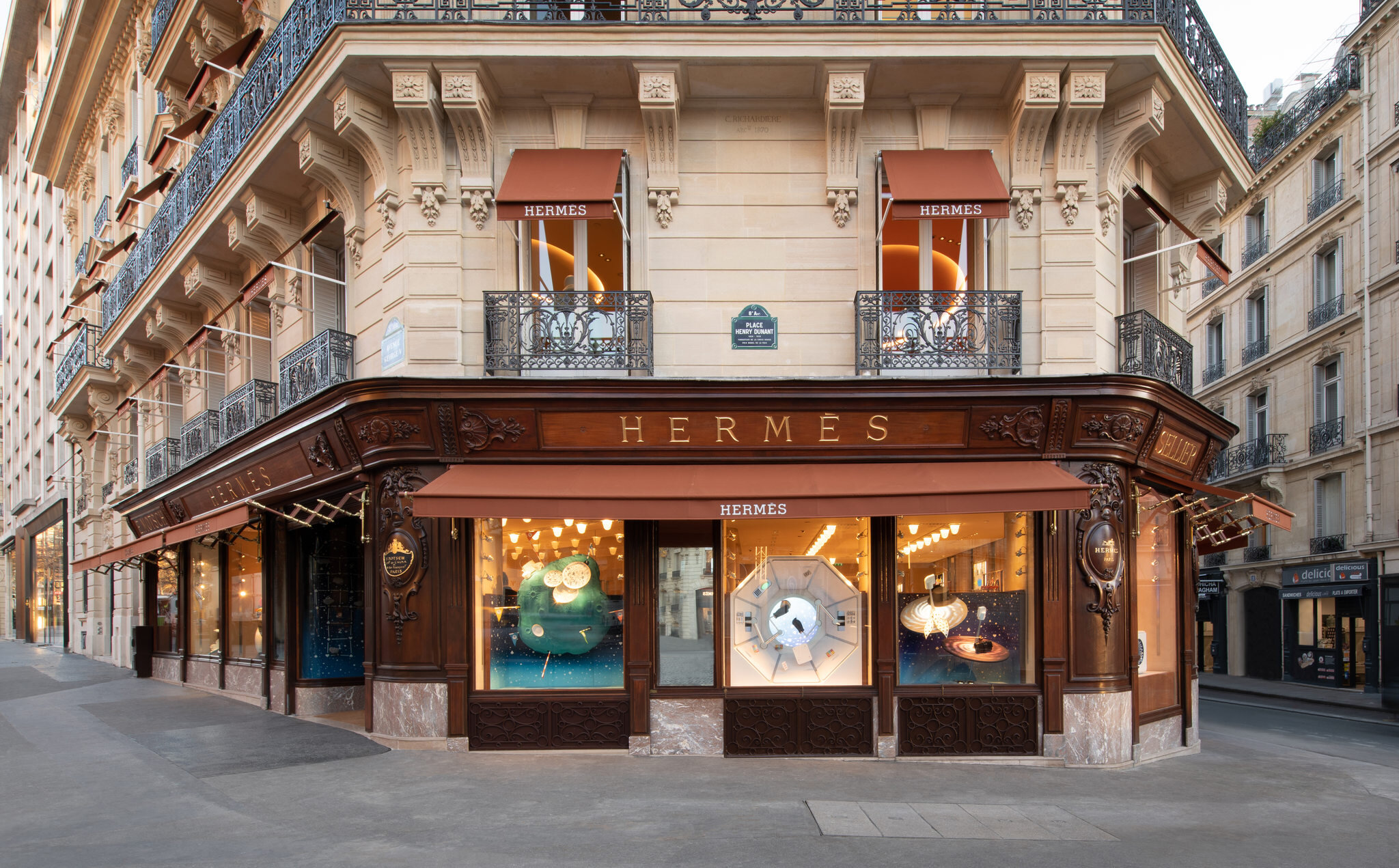Estimated Wealth: $53.1 billion
Introduction
The Hermès name has become synonymous with unparalleled luxury, craftsmanship, and timeless elegance. What began as a modest leather workshop in the 19th century has evolved into one of the world’s most iconic and valuable luxury brands. Hermès’ journey is not just a story of fashion; it’s a narrative of entrepreneurial spirit, a proud family legacy, and an unwavering commitment to quality. This article delves into the captivating history of Hermès, tracing its evolution from its origins to its present-day status as a symbol of refined luxury.
The Foundation of Hermès
In 1837, Thierry Hermès established a workshop in Paris, initially catering to European noblemen by crafting exquisite saddles and harnesses. His products quickly gained a reputation for durability and quality, largely due to his innovative use of the saddle stitch—a technique that remains a hallmark of Hermès products today. Thierry’s craftsmanship was recognized with prestigious awards at the Exposition Universelle in 1855 and 1867, solidifying his status as a master artisan.
The Next Generation: Expansion and Innovation When Thierry Hermès passed away in 1878, his son, Charles-Émile Hermès, took over the business, eventually passing it on to his sons, Adolphe and Émile-Maurice Hermès. In 1880, Charles-Émile moved the workshop to Rue du Faubourg Saint-Honoré in Paris, a location still synonymous with luxury. Under his leadership, the company expanded its offerings to include custom-made harnesses and saddles for Parisian elites, gradually establishing a name in the luxury retail world.
In 1900, Hermès introduced the “Haut à Courroies” bag, designed specifically for equestrians to carry their saddles in style. This marked the beginning of Hermès’ transformation into a global luxury brand.
Adapting to Changing Times: The Birth of Modern Hermès
As the 20th century progressed and the demand for saddles declined with the rise of automobiles, Émile-Maurice Hermès, who had taken over the business, began to diversify the company’s offerings. He introduced accessories and clothing, ensuring Hermès remained relevant in a changing world. During a trip to Canada, Émile-Maurice encountered the zipper—a new invention at the time. In 1922, he secured exclusive rights to use this “clasp” for leather goods and introduced the first leather golf jacket with a zipper, made for the Prince of Wales. This innovation marked Hermès’ entry into the world of fashion and accessories.
The Rise of Iconic Products
Under Émile-Maurice’s leadership, Hermès introduced several iconic products. In 1925, the company launched its first leather handbags, followed by travel bags in 1930, which became a worldwide success. In 1935, Hermès introduced the Sac à Dépêches, later renamed the Kelly bag in honor of actress Grace Kelly, who famously used it to hide her pregnancy from the press in 1956.
In 1937, the brand introduced its first silk scarf, another product that would become an iconic symbol of Hermès. The 1930s also saw the launch of Hermès’ first fragrance, Eau d’Hermès, and the expansion into wristwatches through a partnership with Universal Genève.
The Post-War Era: Expansion and Global Recognition
After World War II, Robert Dumas, a member of the Hermès family by marriage, took over the company. He introduced several iconic products, including the Hermès silk tie and the Chaine d’Ancre bracelet. The distinctive orange boxes, now instantly recognizable as a symbol of Hermès, also made their debut during this period.
In the 1950s, Hermès expanded into new markets, including the United States, where it quickly established a strong presence in luxury retail.
The Birkin Bag and The Late 20th Century
In 1981, a chance meeting between Jean-Louis Dumas, then CEO of Hermès, and actress Jane Birkin on a flight from Paris to London led to the creation of the Birkin bag. Birkin mentioned her need for a spacious and stylish handbag, and Jean-Louis responded by designing what would become one of the most coveted luxury items in the world. The Birkin bag, like the Kelly bag before it, became a symbol of elegance, craftsmanship, and exclusivity.
Under Jean-Louis Dumas’ leadership, Hermès expanded its product offerings to include ready-to-wear clothing, dinnerware, and furnishings. The company also went public in 1993, allowing for further expansion and growth while maintaining the family’s control over the brand.
Modern Wealth
In the high-stakes world of luxury fashion, the Hermès family, led by the Dumas and Puech clans, has crafted a narrative as captivating as the intricate designs of their Birkin bags. In 2023, their collective wealth soared by a staggering $56 billion, elevating their fortune to an estimated $151 billion, with a 35% rise in Hermès’ share value contributing to this impressive figure.
At the helm of this luxury titan is Axel Dumas, a sixth-generation family member and direct descendant of founder Thierry Hermès. Since becoming CEO in 2014, Dumas has skillfully guided Hermès through a competitive luxury market, making it the world’s second-largest luxury company by market capitalization. His leadership has been instrumental in expanding Hermès’ presence in international markets, particularly in Asia.
Bertrand Puech, another key family patriarch, played a pivotal role in maintaining the independence and family-led ethos of Hermès, notably thwarting a hostile takeover attempt by Bernard Arnault, founder of LVMH. Puech’s efforts ensured that control of Hermès remained within the family, contributing to the brand’s continued success and prestige.
However, the Hermès family is much more than just a couple of shrewd business operators. With over 100 members, this influential dynasty owns more than two-thirds of the luxury goods maker, ensuring that the company’s direction remains deeply entwined with the family’s vision and legacy. As they look to the future, several family members, particularly from the Dumas branch, are preparing to launch a family investment structure in 2024, indicating a strategic diversification of their interests and assets, further solidifying their influence in the luxury fashion world.
How Hermès Makes Money
In the luxury fashion industry, Hermès has distinguished itself through its unique blend of exclusivity and artisanal craftsmanship. Unlike other luxury brands like Gucci, Yves Saint Laurent, and Louis Vuitton, Hermès has chosen a different path, focusing on controlled scarcity and minimal marketing. While LVMH, for example, spent around $9.5 billion on advertising in 2022, Hermès’ marketing expenses account for just 4% of its revenue—a strategic decision to maintain its aura of exclusivity.
This understated approach has cultivated a mystique that attracts a dedicated clientele. Hermès products, especially the Birkin and Kelly bags, are not available online and are rarely seen in stores. The brand operates on an invitation-only model, where high-spending loyal customers are offered the chance to purchase their coveted products. To be considered for a Hermès bag, customers must first demonstrate their loyalty through consistent purchases of other Hermès items like scarves, perfumes, or jewelry.
This strategy of controlled scarcity has transformed Hermès bags into highly sought-after treasures that often appreciate in value—a rarity in fashion accessories. Each Hermès bag is handcrafted by artisans in France, with the creation of a single Birkin bag taking up to 48 hours of labor. Hermès artisans undergo rigorous training, including a four-year apprenticeship and an 18-month mentorship, before they are allowed to craft a bag.
This emphasis on artisanal craftsmanship contrasts sharply with the industry’s lean towards automation and mass production. In the secondary market, where pre-owned luxury goods are traded, Hermès bags often appreciate in value, with returns surpassing traditional investments like the S&P 500 or gold. This remarkable phenomenon highlights Hermès’ unique position in the luxury market, transcending the typical ebb and flow of fashion trends.
Even a few decades ago, it would have been difficult to imagine this family-owned brand going toe-to-toe with fashion’s corporate giants like the $500 billion LVMH. Hermès seemed destined to remain a boutique brand until a series of financial twists altered its trajectory, starting with its founder, Thierry.
Hermès Today: A Legacy of Excellence
The Dumas family, heirs to the Hermès fortune, have transformed the brand from a modest 19th-century saddlery into a global luxury empire, making them one of the world’s wealthiest families with a fortune estimated at $94.6 billion in 2022. Under the leadership of family members like Axel and Pierre-Alexis Dumas, Hermès has continued to innovate while remaining true to its roots in meticulous craftsmanship, producing iconic items like the Birkin bag. The family’s strategic leadership has preserved the brand’s exclusivity and quality, successfully fending off challenges such as LVMH’s takeover attempt in 2010, and ensuring that Hermès remains a symbol of luxury, refinement, and timeless elegance.
Alex Dumas’s Strategy
In a speech given in 2023, Axel Dumas emphasized that Hermès’ growth strategy focuses on maintaining quality and craftsmanship, aiming for a 7-8% annual volume increase. A key part of this approach is their commitment to handmade products, with each bag crafted by a single artisan over 15 hours. Despite pressures for higher production, Hermès prioritizes quality over speed, ensuring their products remain unique. Dumas highlighted the company’s strong performance, particularly in the leather goods sector, and expressed optimism about future growth, especially in markets like China, where a younger, wealthier middle class is driving demand.

